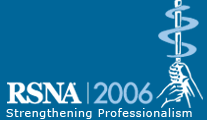
Abstract Archives of the RSNA, 2006
Siddharth Ashok Padia, Presenter: Nothing to Disclose
Mark Early Baker MD, Abstract Co-Author: Nothing to Disclose
Christopher James Schaeffer MD,PhD, Abstract Co-Author: Nothing to Disclose
Erick Marc Remer MD, Abstract Co-Author: Nothing to Disclose
Nancy A. Obuchowski PhD, Abstract Co-Author: Consultant, Siemens AG
Brian Robert Herts MD, Abstract Co-Author: Researcher, Siemens AG
To assess the indication, technique, safety, and efficacy of percutaneous ultrasound-guided random liver biopsy in evaluating parenchymal liver disease in a tertiary care institution.
Over a 24 month period, 539 percutaneous random liver biopsies were performed in 350 patients under direct ultrasound visualization. Patient charts were retrospectively reviewed with IRB approval waiving consent. The indication for biopsy, needle type, number of passes, use of sedation, complications, and pathologist assessment of specimen for determining a pathologic diagnosis were recorded. We constructed an upper 95% confidence limit on the probability of inadequate sampling and the probability of complications.
Records were available on all patients. 378/539 (70%) were liver transplant recipients with elevated liver enzymes and possible rejection. 69/539 (13%) concurrently underwent biopsy of a focal liver mass. 230/539 (43%) carried a diagnosis of Hepatitis C, and 16 (3.0%) carried a diagnosis of Hepatitis B. 9/539 (1.7%) were performed on potential partial-liver donors. Biopsy was performed under the supervision of one of nine subspecialty trained abdominal radiologists with experience ranging from 2-22 years. An 18-gauge automated core biopsy needle was used in 536/539 (99%). Local 2% lidocaine was used in all procedures. Sedation using midazolam (median 1 mg, range 0.5-5 mg) and fentanyl (median 75 mcg, range 25-200 mg) was used in 483/539 (90%). Median number of passes was one (mean 1.7, range 1-6). There were 8 inadequate specimens (1.5%, [2.3, Upper 95% C.I.]). Complications were identified in 11/539 (2.0%, [2.6, Upper 95% C.I.] patients: 3 painful hematomas, 5 severe post-procedural pain, 2 infection, 1 rash). There were no sedation-related complications or deaths related to the procedure.
Ultrasound-guided percutaneous random liver biopsy is both efficacious and safe for evaluating diffuse liver disease. Sedation requirement were minimal and overall complication rate was 2.0%. Success rate for obtaining an adequate specimen for diagnosis was 98.5%.
Ultrasound-guided percutaneous random liver biopsy is both efficacious and safe.
Padia, S,
Baker, M,
Schaeffer, C,
Remer, E,
Obuchowski, N,
Herts, B,
Safety and Efficacy of Percutaneous Ultrasound-guided Random Liver Biopsy. Radiological Society of North America 2006 Scientific Assembly and Annual Meeting, November 26 - December 1, 2006 ,Chicago IL.
http://archive.rsna.org/2006/4439314.html

